Check out some books by your tutor Fiona Veitch Smith … (click on the book covers to find out more)
 This is the second session of eight in our online creative writing course, in which we’ll be exploring how to write a short story. Now that your creative juices have been stirred, you should be ready to start writing; if not, go back and try some of the exercises in the first session of this course, releasing your creativity.
This is the second session of eight in our online creative writing course, in which we’ll be exploring how to write a short story. Now that your creative juices have been stirred, you should be ready to start writing; if not, go back and try some of the exercises in the first session of this course, releasing your creativity.
Writing short stories versus writing novels
Most new prose writers have the beginnings of at least one novel in their drawer. They will get to chapter three or four and give up because they don’t have the skill, confidence or stamina to carry on. If you’d never run a marathon you would be a fool to enter the Great North Run without first attempting some shorter distances. Short stories are the best place for new writers to hone their craft. But don’t be fooled, they’re not necessarily the easiest option. It takes a great deal of skill to write a short story that’s effective – you will have to curtail any tendency to ramble on. And not all writers need to be novelists either. I believe F. Scott Fitzgerald was quite comfortable as a short story writer and only produced the occasional novel out of pressure from his publisher, while the great Raymond Carver never wrote a novel in his life.
Short stories are an endangered species
There was once a time when every magazine carried some short fiction. Sadly, that time has passed. Now, apart from some weekly women’s magazines in the UK, short stories have retreated between the dusty covers of literary publications. The situation has become so bad that a group of leading writers and publishers got together to start the Save the Short Story Campaign and are beginning to make good progress.
Short stories appear to be doing far better across the pond in America where the art form is more respected and accessible to ‘ordinary’ readers. However, there are signs that this may not continue. Read Stephen King’s thoughts on the decline of the American short story. You can check out Writer’s Market for a list of North American short story outlets.
How long is a short story?
So what is a short story? Short stories can be anything from 500 to 6000 words. Anything under 500 words tends to be labelled ‘flash fiction’ or ‘micro fiction’ (although some would argue it’s still a short story) and anything over 6000 is moving into novelette or novella territory. I would argue that a short story is something that can be read comfortably in one sitting and doesn’t leave you starving or bloated. Popular magazines tend to accept work of between 1000 – 2000 words, more literary ones go for longer. Children’s short stories tend to be under a thousand words. If you would like to write for younger readers, check out some of my articles on writing for children.
A short story is a slice of life
A short story is a slice of life. As such, you should narrow the time frame and geographical location of the piece. One plot, two or three characters and no more than two locations (one would be better) should fit into a short story. If this is too tight a fit perhaps you should be writing a novella or a novel.

Fig 1: Short story time span
How to begin a short story
Start your piece as close to the turning point or climax of the story as possible. Most writers take a paragraph or so to find their feet. On a second reading they will delete the first paragraph as unnecessary exposition or padding. Your first sentence is crucial; it should be filled with energy, intrigue and forward momentum. The reader should be stopped in their tracks and not be able to turn away until they’ve read the whole thing. The first sentence should raise questions that need to be answered. Take for example these openers:

- ‘My mother was making me a dress.’ (From ‘Red Dress – 1946′, Dance of the Happy Shades)
- ‘General Sash was a hundred and four years old. ‘ (From ‘A Late Encounter With the Enemy’, The Complete Stories)
- ‘Fact is the car needs to be sold in a hurry, and Leo sends Toni out to do it.’ (From ‘Are These Actual Miles’, The Oxford Book of American Short Stories)
Exercise 4: Jot down questions that arise from these openings and what, if anything, makes you want to read on. If you can get hold of copies of the stories do so. Ask yourself: were the questions answered? Was I satisfied with the answers? Was the answer what I expected?
Exercise 5: Use a trigger image, phrase or thought (see Releasing Your Creativity) then write down a leading, opening sentence. What questions might be raised? How might you answer those questions in a short story? What setting would be most appropriate to answer the questions? How long will it take for the question to be answered? Can you think of any characters that might help you tell the story and answer the question? (We will be looking at building a character in a future session and try writing another story from their perspective). Look over your answers and see whether or not the outline of a short story is emerging. If not, try another sentence or another trigger image.
Beginning, middle, end
Every short story should have an opening that is developed in the middle to build tension which reaches its climax towards the end, after which there is a rapid conclusion. For those of you who have studied any dramatic or literary theory you will recognise this progression as typical Aristotlean Three Act Structure. In a short story you should not spend too much time in the ‘first act’ where development, setting and exposition take place, and should start your narrative as close to the inciting incident (aka point of change, first turning point or initial crisis) as possible. The inciting incident is the event which upsets the apple cart of the characters’ ordinary world and compels them to act in a certain way in order to bring balance or closure to their disrupted environment. In the Red Dress it is the school dance which the narrator fears will bring humiliation. She then tries to fake illness in order to get out of it, then, when this fails, tries to remain as invisible as possible at the dance. We will look at how a character acts to bring or avoid change change in a future discussion.
Exercise 6: What is the ‘ordinary world’ of your opening sentence? Remember, this may be an abnormal world to most readers, but it should reflect the status quo of your characters before it is challeged or shaken up. What challenges this status quo? This is your inciting incident. Using only three paragraphs (50 – 60 words each) or less, start writing your short story. In this short space you should establish your ordinary world, your main character and the inciting incident of your story.
Obstacles, setbacks, climax and resolution
This is the outline of the rest of your story. Imagine a graph of building tension.

Fig 2: Dramatic development in three act structure
Your story should follow that arc by allowing your character to face obstacles, setbacks and minor victories on the way towards reaching the dramatic climax and bringing resolution.
Exercise 7: If you are graphically minded draw yourself a rough graph or jot down the beginning, middle and end of your story. Now write the story and fill in the gaps. If you’re not so graphically minded, just jot down a few key phrases or events that might carry your story forward to a possible conclusion. Don’t worry, this isn’t cast in stone, and you can change the beginning, middle, end and anything in between at any time. Many writers just write to find their voice. That’s fine. Once you have a first draft, go back and see if it has some kind of structure or arc. If not, you may have to tweak it a little.
I hope this has given you some insight on how to write a short story. Happy writing!
The next creative writing course session is writing from a point of view.
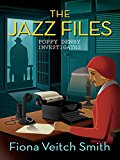

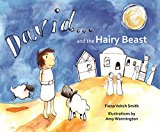
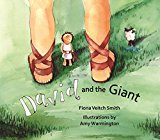
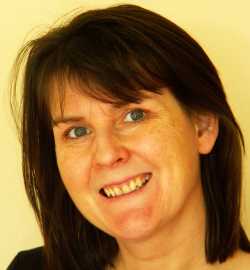 Welcome to The Crafty Writer's free online creative writing course, presented by Fiona Veitch Smith, a freelance journalist, editor, author, playwright, screenwriter and writing teacher. I hope that you'll see a dramatic improvement in the quality of your writing as you work through this course.
Welcome to The Crafty Writer's free online creative writing course, presented by Fiona Veitch Smith, a freelance journalist, editor, author, playwright, screenwriter and writing teacher. I hope that you'll see a dramatic improvement in the quality of your writing as you work through this course. 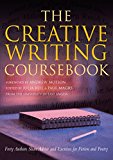
My short story is slowly turning into a novella…I seem helpless with short stories.
Well that may be a good thing and something to fix– not be rude. It’s good that you’re developing a longer piece from a short story because even great stories like the Lord of the Rings had a humble, non-caring beginning which became a series. However, what matters is the question, [are you able to finish it and are you use to crafting novels? If not, it is best to start from the beginning by working on shorter stories. Until then, save your wonderful debut ideas and long stories for the time when you can complete a novel. However, you probably are a pro already and knew everything that I told you before I told you. Keep going. If you truly love something, that passion will beam red in front of an audience because that is how people like us- or- it may be just my crazy self- that is how we communicate with others.
Thanks for all these guidelines but I have doubt; Is it okay if we start with an initial climax scene and then go into a flashback?
Yes, that’s fine. It doesn’t always work though. Write it both ways and see which one works best. But it is certainly ‘allowed’.
I was looking at the story arch graph and noting that I have an inciting incident at the appropriate place but it is sort of a preliminary or “fake” inciting incident. The real inciting incident comes right before the climax and then my story ends quickly after that. I like it because it is sort of like a Quentin Tarantino or Robert Rodriguez where you find out that the story is not going in the direction you thought and then it ends intensely. But I’m wondering if I should adjust it to make it follow the graph you drew here more closely. Would that appeal to audiences more? Or does it depend on the individual and is some creative liberty ok?
Hi Nikki. It’s quite acceptable for there to be a ‘fake’ inciting incident. It’s what gets the story going and causes your protagonist to act. But it can easily turn out that it was not quite as it seemed and the the fuller picture and ‘what really happened’ can emerge later. So stick with what you’ve got!
Ok! Thanks Fiona!!
Hi Fiona
I am throughly enjoying this course. I have the intention of writing my autobiography, but am now thinking of turning each stage of my life into short stories. Thank you.
That sounds like a very good idea, Helen. It will break it down into more manageable chunks for you. Happy writing!
I managed to setup the Graph and it ended quite the way intended.
Thank you.
Hurrah!
My short story is very rhythmic.. is that okay? I write poetry and even when I am talking my words tend to rhyme at times.
Hi Latricia. Well there is a whole genre of epic narrative poetry! Most of it, however, is written in blank verse, but I don’t see why a bit of rhyme here and there should be a problem. You should consider writing for children as it is quite acceptable for there to be rhyme in books for under 7s.
I love this lesson. I am a young writer and I was very intrigued.
I’m very glad to hear you found it useful. Happy writing!
Thank you so much for putting this course together. I decided to take it because I want to start writing for an audience. And it has been quite instructive and helpful. Thank you.
You are very welcome.
Hi Fiona..your style of writing and capturing the reader’s heart is truly inimitable..and pardon me for saying this..I read all the books suggested by you only to realise that the aforementioned fact regarding your inimitable writing style is absolutely true!! I think the other writers,with due respects to their writing prowess, could learn from you this rare skill. But then again I’m sure this is going to be difficult as yours is a rare inborn talent that cannot be so easily imbibed or imitated.
I think I will try my hand at short stories and sets.
Thank you for the great summarised version of story writing . Am intrigued
You’re welcome Elizabeth. Happy writing!